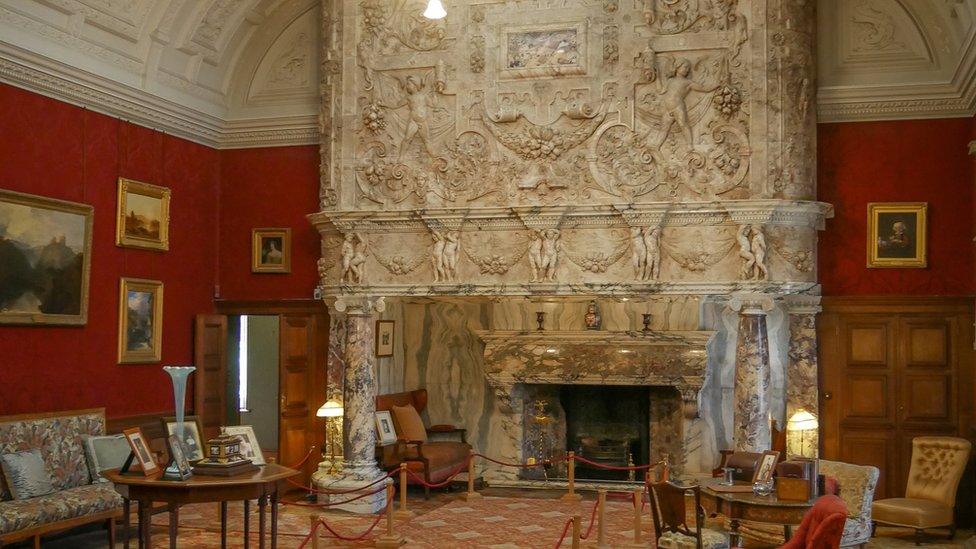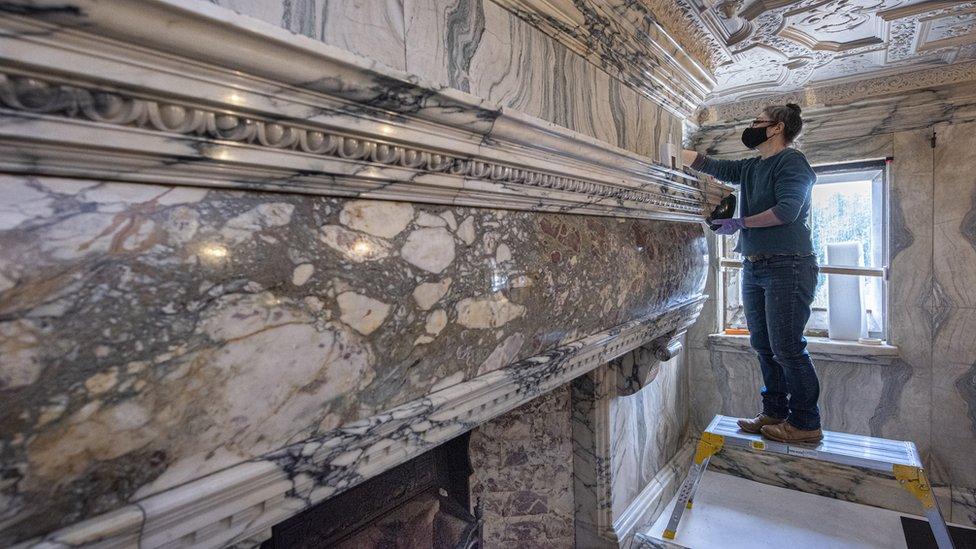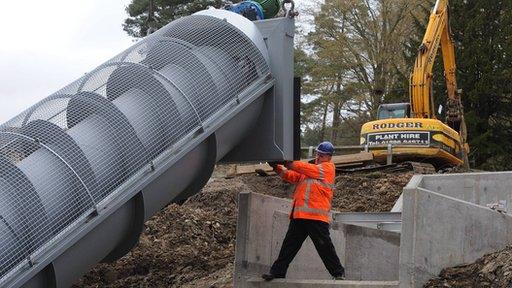Cragside fireplace under repair after 'wetter winter' damage
- Published

The work will stabilise the marble
A colossal marble fireplace at a Victorian stately home is undergoing repairs after water damage put it at risk of crumbling.
The intricately carved feature at Cragside in Northumberland dates from 1884 and is 6m (19.6ft) tall and reputed to weigh 10 tonnes.
"Wetter winters" have overwhelmed the building's drainage system and caused leaks, the National Trust said.
This has caused salt to infiltrate the marble and destabilise the structure.
Cragside House, near Rothbury, was built by the industrialist Lord William Armstrong, known to some as "the magician of the North".
It was considered a technological marvel of its age as it was the first house to be lit by hydro-electricity and featured innovations including a passenger lift and a dishwasher.
The drawing room, with the ornately decorated Italian marble fireplace as its centrepiece, was used to entertain members of the royal family and foreign dignitaries such as the Shah of Persia and the Prince of Afghanistan.

The fireplace is considered a masterpiece of the Victorian architect Robert Norman Shaw
Clare Woolford, from the National Trust, which runs Cragside, said: "The Victorian drainage system doesn't support 21st Century weather conditions. Winters at Cragside are wetter and much longer, due to climate change.
"The drainage system is now visibly overwhelmed by water which pours from the gutters and cascades down the outer wall."
A leak has led to moisture building up in the marble fireplace and then evaporating, which has led to salt deposits in the "pores".
Ms Woolford added: "By removing the source of moisture and controlling the environmental conditions in the room, we reduce the impact of the salts in the long term.
"It will take years to fully dry out."
The sources of the water getting into the building are being investigated, prior to repair work.

It will take years for the moisture in the structure to fully dry out

Follow BBC North East & Cumbria on Twitter, external, Facebook, external and Instagram, external. Send your story ideas to northeastandcumbria@bbc.co.uk, external
Related topics
- Published10 April 2014

- Published19 June 2013